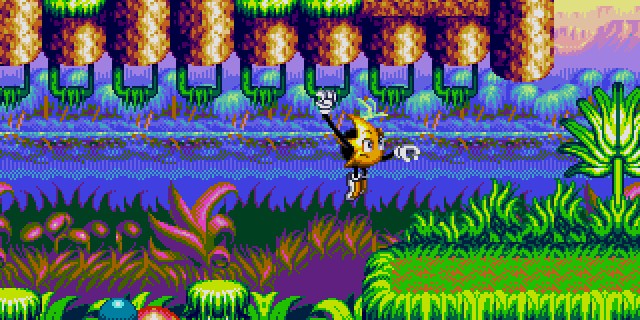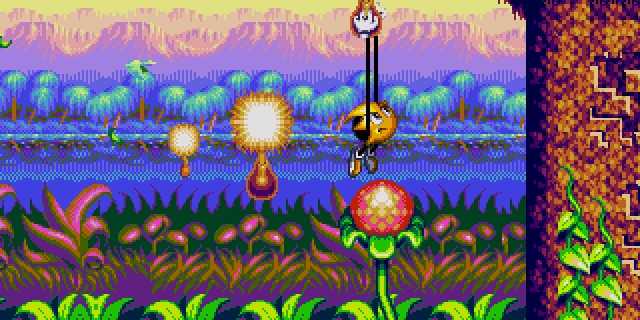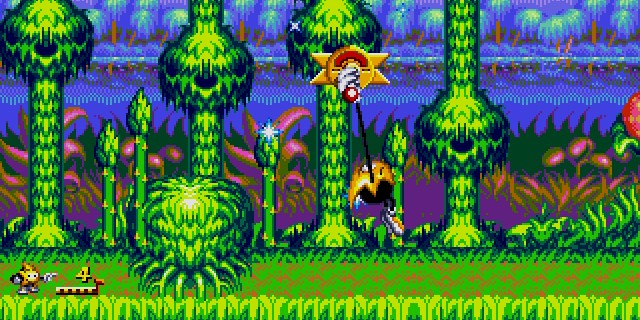
Sonic the Hedgehog was the result of a very conscious effort by Sega to improve its image and break into the American market hard enough to shatter Nintendo’s virtual monopoly. Many innovative platforming ideas were considered and discarded, but not all of them were forgotten forever.
Ristar, released in 1995, was designed by Hirokazu Yasuhara and Yuji Naka. Featuring serpentine levels and using a modified Sonic engine, it’s hard not to see similarities to the game that made them famous, but in practice the game is more reminiscent of Dynamite Headdy than any Sega title. And there aren’t many games like Dynamite Headdy.
Like in Treasure’s classic, Ristar can stretch his limbs in eight directions, allowing him to reach all kind of ledges and platforms through a smart use of the environment. You can grab a tree and jump from there to a pole, and blowing the giant dandelions found on the game’s first stage allows you to grab their seeds and fly towards a secret chest.

This is interesting, because it’s not the usual way of moving in a platformer. Most games of the genre focus on jumping over obstacles or jumping to position your shots, but here you jump to position your stretching limbs and reach a little bit higher than you normally could. Ristar has a certain weight to him that makes him slow on foot; the game rewards you for using your powers all the time, as often as possible.
And, in a sense, that’s all the game needs to be great. It’s not a game based around a strange premise that makes you stand back in awe. It’s a cute, incredibly colorful mascot platformer, with superb level design centered on a fun mechanic. There’s not much more you can ask of it. It doesn’t try to blow your mind; it tries to be incredibly solid, and given that I’m still playing it 18 years later, it’s clear that it succeeds.
What’s interesting about Ristar’s design is its complete lack of fat. Given the somewhat low speed of the character compared to other games of the genre (especially Sonic), the levels feel condensed, with all the challenges being one right after the other, and never is a step used on pointless walking. The game lasts about two hours, but not a second is wasted. It’s easy to take it for granted, but that takes some real skill.

The Genesis’ sound is known for its characteristic harshness; that rough, dissonant wave caused by the workings of its FM Chip. Ristar’s soundtrack, by Tomoko Sasaki, is as cheerful as its background colors, with a happy mixture of tropical music and otherworldly sounds that ends up feeling quite soothing.
Ristar isn’t overly expensive in cartridge form, but for those who would prefer not having to connect a 25-year old system to their shiny plasma screens, it has been included in practically all of the console’s compilations. The emulation isn’t great, but it’s much less of a pain than setting the game on your own.



















